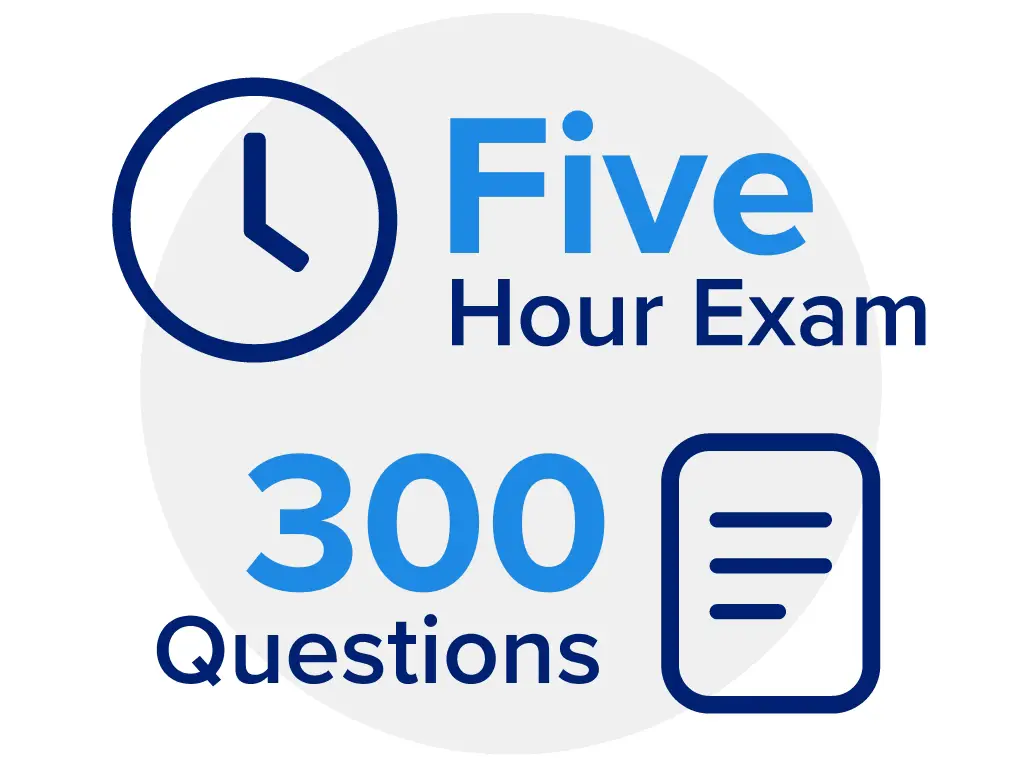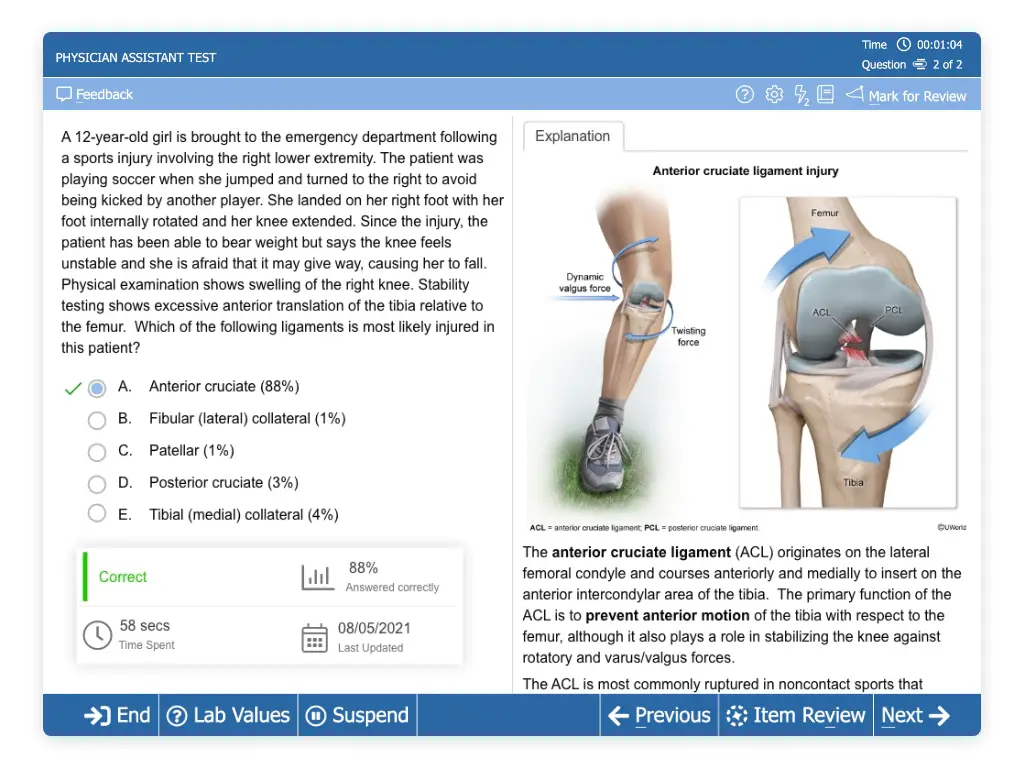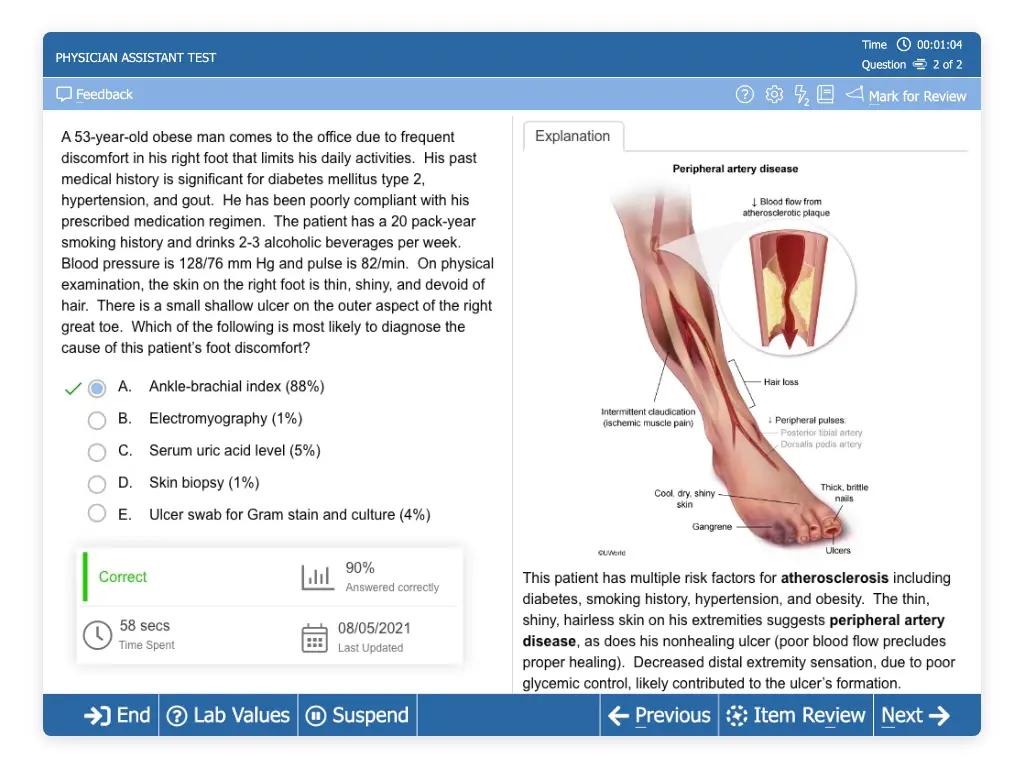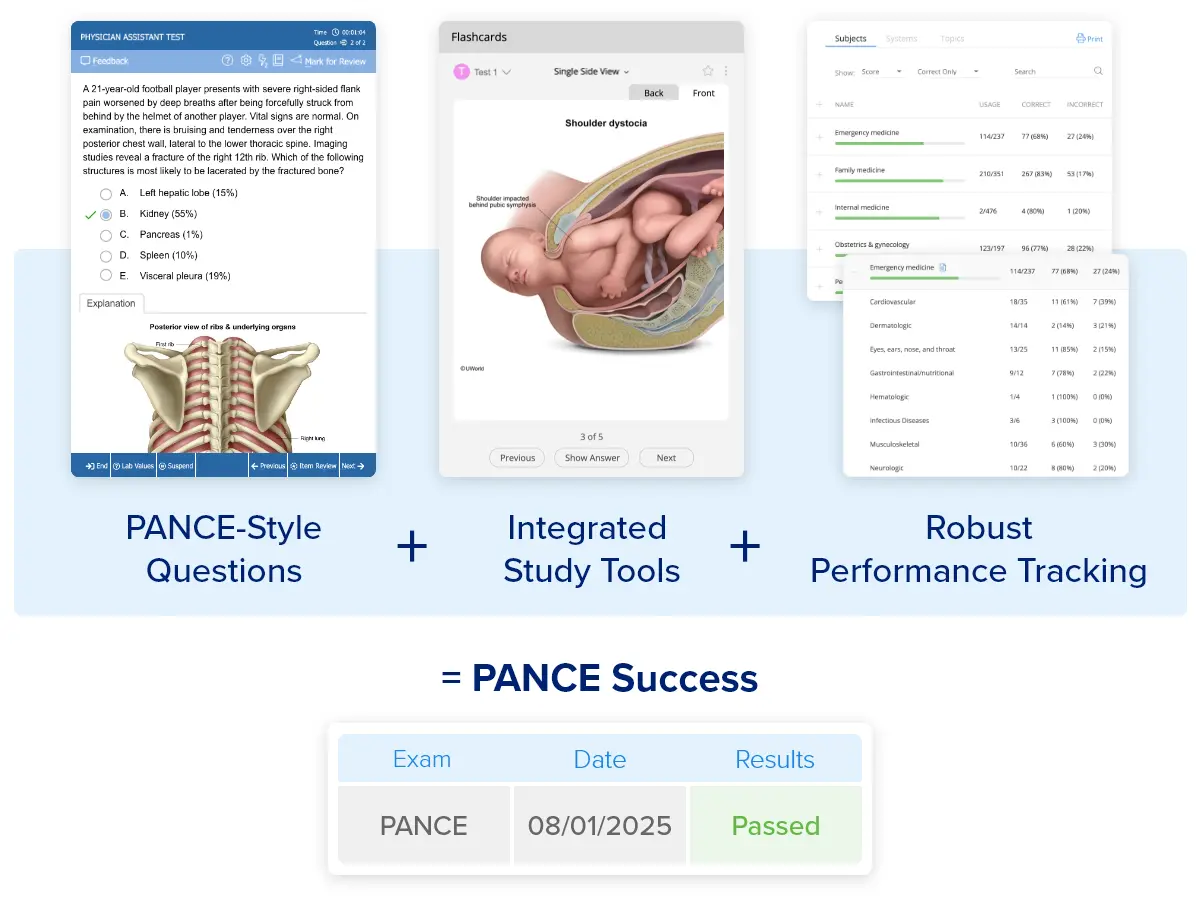The PANCE is a high-stakes exam you must pass to become a certified physician assistant in the U.S. The National Commission on Certification of Physician Assistants (NCCPA®) determines the PANCE blueprint, which changed in 2025 to reflect the evolving landscape of medicine. The PANCE was first administered in 1975 and continues to evolve to reflect what physician assistants (PAs) will face in their clinical settings.
As you begin your PANCE prep, it's important to understand eligibility requirements and the exam format to get the most out of your study sessions.
PANCE Registration and Eligibility
If you graduate from an accredited PA program, you can take the PANCE as soon as 7 days and up to 6 years after graduation. You may take the PANCE up to 6 times within the 6 years following graduation. If you haven’t passed the PANCE after 6 attempts, or if you don’t take the PANCE before your 6-year window has ended, you will no longer be eligible to take the exam.
Upon passing the exam, you are granted NCCPA certification that allows you to begin practicing medicine as a physician assistant.
Learn more about how to register for the PANCE.
PANCE Test Format and Structure
The PANCE is a 5-hour exam that is divided into 5 blocks of 60 questions. You are given 60 minutes to complete each block of questions.
You are given 45 minutes for scheduled breaks in between question blocks. Any break time taken beyond the allotted 45 minutes will be deducted from your exam time.
During your scheduled break time, you can visit your locker at the testing site and access personal items such as purses, bookbags, watches, cell phones, food, beverages, calculators, and study materials that are not permitted in the exam room. Any belongings that seem suspicious may be subject to inspection.

PANCE Questions
The PANCE consists of 300 multiple-choice questions. Due to the high-stakes nature of this PA certification exam, it is important to practice with high-quality PANCE practice questions. We offer over 2,000 challenging PANCE practice questions, in-depth explanations for every answer choice, vivid medical illustrations, flashcards with spaced repetition, and precise performance tracking. When you sit for your exam, the practice questions you have answered will make the actual test feel like just another study session.
PANCE Blueprint
The PANCE tests:
- Your knowledge of the diseases and disorders PAs encounter
- Skills related to tasks PAs perform when treating patients
Here are the medical categories tested and the weight each is given on the exam based on the 2025 PANCE blueprint:
The task categories tested and the weight each is given on the exam are as follows:
Medical content makes up 94% of the PANCE, while questions about professional practice are the remaining 6%.
Tips to Pass the PA Exam on Your First Attempt
Our accomplished, practicing PAs with extensive clinical experience create our award-winning physician assistant exam prep. The PANCE practice questions you encounter in our question bank (QBank) are at the exam level or more difficult so you can challenge yourself and be ready for the PANCE test and clinical practice.
“Fantastic thus far. Challenging questions that are often 2nd and 3rd order require more in-depth reasoning.” – Zachary
“Very similar to actual PANCE questions. Incredibly helpful for studying to retake the exam. Much better than other resources I've used in the past.” – Marisa
Pass your PA certification exam on the first attempt by following these tips:
- Be sure to give yourself sufficient time before the exam to prepare properly. We recommend you study for 3 to 6 months.
- Practice with PANCE-like questions and review our answer explanations carefully.
- Take advantage of the study tools integrated into our PANCE prep. The comprehensive PA QBank is equipped with 1,400+ PA ReadyDeck Flashcards with spaced repetition, a medical library with hundreds of peer reviewed articles for clinical review and an online notebook tool. They will help you improve memory recall.
- Review your performance reports regularly to discover any weak areas and adjust your prep accordingly to strengthen your performance in those areas.
- Take at least 1 full-length practice exam in test-like conditions to prepare for the length of the exam.
A passing score is 350 out of 800. Focus on understanding the full range of tested content rather than striving for complete mastery.
Frequently Asked Questions (FAQs)
What can I bring to the testing center when taking the PANCE?
You will need to bring 2 forms of valid and current identification to your testing site. One form of identification must contain your printed name, signature, and a permanently affixed photograph. The second form of identification must contain your printed name and signature.
Any personal items you bring to the exam must be kept in your assigned locker at the testing site. You will be permitted to access personal items only during your scheduled breaks during the PANCE exam.
Can I use a calculator on the PANCE?
No. Calculators are not allowed or necessary when taking the PANCE.
Can I take the PANCE from a different state?
Yes. After graduating from an accredited PA program, you can take the PANCE at 1 of the over 200 Pearson VUE testing centers nationwide. Upon passing the PANCE, you will need to apply for your PA license in the state where you will practice as a PA-C.
Read More About the PANCE
PANCE Eligibility, Registration & Cost
When do I register for the PANCE exam? Am I eligible to sit for the exam? When should I take it? How much does it cost to register? Find the answers to these questions and more here.
Wondering what to expect on your PANCE and how to prepare for the exam? This helpful study guide provides exam information, including what types of questions you will encounter.
Learn how the PANCE exam is scored, what the average pass rate is for first-time PANCE candidates, and how to earn a passing exam score in this explanatory scoring guide.
Discover important exam details and begin your PANCE prep by acquainting yourself with the exam blueprint. This article will give you a behind the scenes look at this licensure exam.









